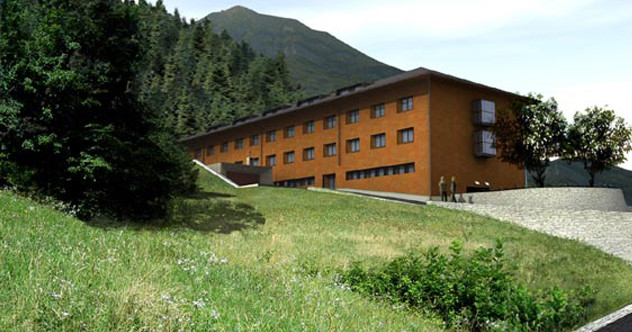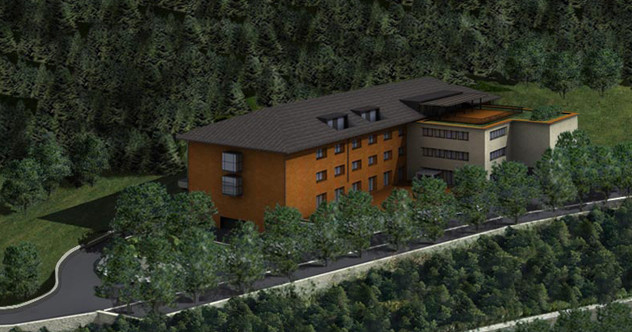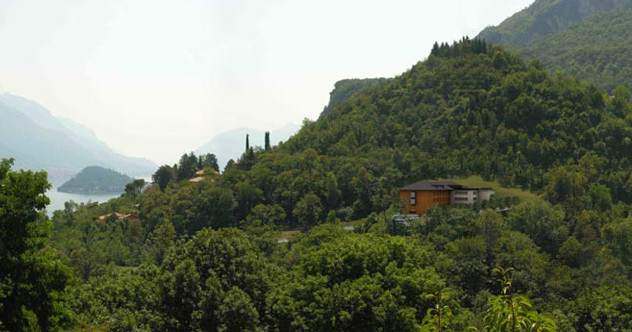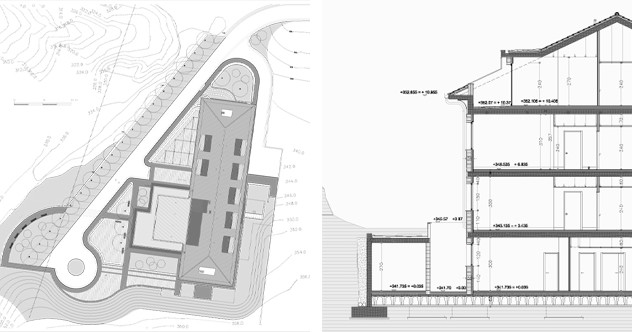The project is part of the broader PII of the Municipality of Menaggio, which envisages the qualitative recovery of some disused dwellings and the construction of new residential volumes with the road and service infrastructure network in the Carlazzo locality, as well as the transformation of the current Villa di Loveno into a hotel structure.
The location and orientation of the care facility responds to criteria of morphological respect of the surrounding terrain and the best exploitation of the geothermal axis. The radial orientation of the main body with respect to the top of the hill allows for the lowest possible visibility of the building as well as the best view for the guests, avoiding the strong difference between upstream and downstream rooms.
The functional distribution includes:
– 4 cores on two floors (in addition to the possibility of building a 5th on the 3rd level) for a total of 90 beds;
– a ground floor for common services;
– a Day Centre for 25 guests;
– all the service areas necessary to make the structure functional and adequate not only to comply with the new regulations, but also to ensure maximum management rationality, an indispensable prerequisite for the operation of structures of this type over time.
The L-shaped floor plan responds to functional but also architectural needs, allowing the building to be articulated into two formally distinct volumes.
The criterion adopted suggests a main body with a pitched roof and an additional terraced body, as if it were a recent extension of the original building.
The volume is partially inserted into the ground, while offering a large space at the rear for easy access for guests and some service activities. On the west front, to the side of the main entrance, there is a terrace with a pergola overlooking the valley for outdoor living.
The west front is the most articulated both in terms of the volumes of the building and the terracing, which is oriented in the best way towards the light. It overlooks, emphasising the path, the old railway track that used to lead to Porlezza and that will become an interesting cycle path.
The volumes, the roofs, the treatment of the façades and some construction details suggest traditional architecture, without reproducing it in an artificial way.
The aim is to fit into the context with a recognisable language, but one that, on closer reading, highlights current solutions, based on the functioning of a structure that must inevitably be technologically advanced.
« Go back



